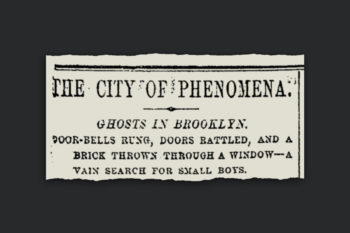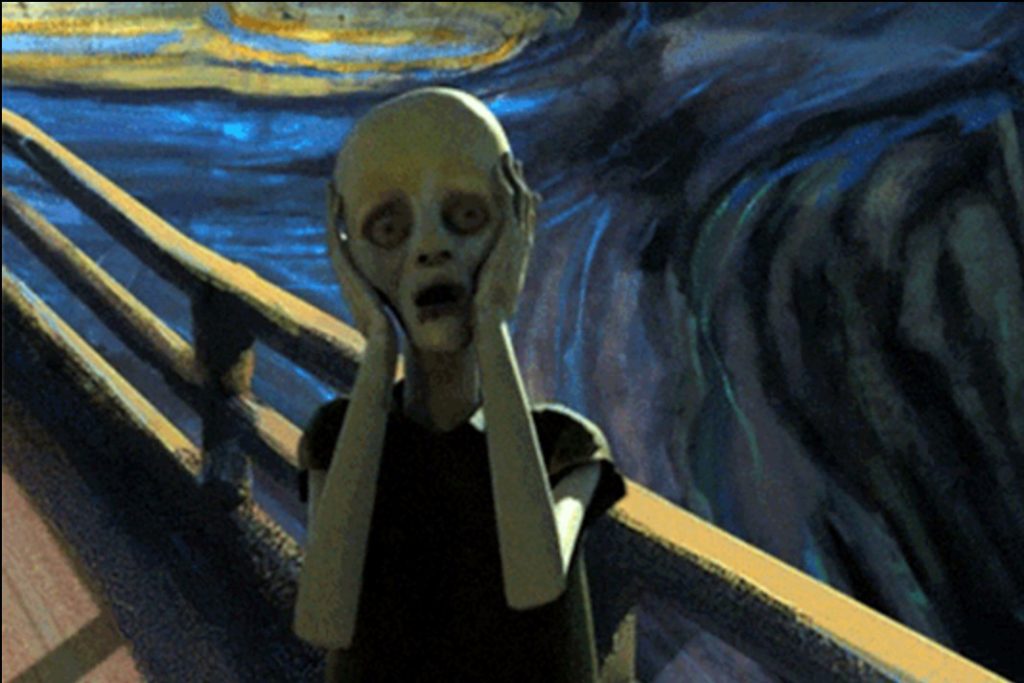 It’s Halloween – and at Practica, we’ve been wondering….
It’s Halloween – and at Practica, we’ve been wondering….
While the existence of ghosts still defies scientific proof, we feel that in business we are creating a world that is “haunted” by verifiably real spirits – by propagating our most advanced Cloud, AI, and especially IoT technologies in undisciplined, unsecured, and pervasive ways. Although some might like to debate the point, we don’t feel that this will lead to an apocalyptic future. We do believe that the existence of new and real “technology ghosts” will create a new cultural world, with potentially dramatic shifts in social constructs and in our relationships to each other. We’re really interested in exploring what it will look like!
The idea of a world inhabited by “spirits” is as old as humankind, and is arguably as powerful and pervasive as any other idea. It’s been explored in every domain imaginable: mythology, philosophy, and the arts, from cave paintings to YouTube (and even The New York Times in 1878).
Yet, as potent as the idea is, this spirit world has always been based in imagination, with its existence impossible to verify empirically.
Based on countless interviews with business professionals in technical fields, we believe that we are now on the edge of a world inhabited by a concrete analog to traditional spirits. These new “technology” spirits are made of bits and bytes and code and chips and sensors and machines tied into the systems of our modern world.
Traditional spirits and technology spirits are defined by a handful of shared essential characteristics that can make them seem magical to those who share a world with them:
- They’re invisible.
- They may be anywhere and everywhere.
- They may be unavoidable.
- They have intelligence and agency, even minds of their own.
- They may have good or bad intent.
- Their actions can be very difficult to control or stop.
- Their actions affect us in the real world.
We can remember the cautionary tale in the film 2001 of HAL and the way it evolved to overrule the intent of its creators. This tale is now made real by a combination of familiar technologies and cultural influences that are forcing rapid change – and there’s no going back.
Here are the technologies that are creating the spirit world:
- The growth of Cloud deployments represents a form of massive intelligence that is increasingly running the operations of modern, everyday life. In a collective sense, the “cloud” is also pervasive yet invisible; centralized yet distributed, precisely controllable yet massively redundant and therefore hard to stop or “kill”.
- Artificial intelligence (machine learning, deep learning, etc.) is still in its infancy, but is rapidly evolving to the point where it can choose its own priorities and autonomously decide how to perform better and become even more intelligent. Even the most skilled of AI developers agree that AI algorithms often operate with logic that cannot really be understood, even with reverse engineering. Arguably then, AI systems can have “minds of their own.” The resulting unintended consequences can be disturbing, as when Microsoft’s Tay chat-bot created and posted its own inflammatory tweets in 2016.
- The rapid deployment of IoT or the “Internet of Things” technology is also in the process of distributing computing power anywhere and everywhere in a way that is nearly invisible. Extremely low-cost, lightweight, simple computing power is built into “things” unimaginable just a few years ago, such as internet-enabled onesies that monitor an infant’s sleep, and near-real-time monitors in cars that enable dynamic driving insurance pricing. As it evolves, the reach of these sensors, controllers, and programmed power embedded in machines can become nearly limitless. Because these machines are all connected to the Internet and thus to vast, global cloud computing power, their ability to perceive their environment, to make local decisions, and be controlled remotely pushes their ability to “think” independently to new levels.
On their own, these technologies are not necessarily problematic. There is no doubt that they are and will continue to contribute enormous benefits to society, culture, and daily life. However, these developments are not only about technology.
Here are thoughts on the cultural context in which these technologies are developing in ways that multiply their power to change society:
- All of these technologies – “The Cloud”, AI, and IoT are nearly invisible and so inexpensive that cost is not a limiting factor in implementation. They’re everywhere and nowhere at the same time. Knowing when, what – and who – are behind the curtain is increasingly an unwinnable guessing game.
- These increasingly autonomous and self-propagating technologies can be launched into the world by newbies with limited or no computer engineering skills using off-the-shelf technology. They can thus be implemented in an opportunistic way without foresight or oversight as to whether the end effects will be as intended and controllable, or invasive – like an aggressive infection.
- Standards and regulations designed to manage these developments are limited or non-existent. The will to “Build” currently swamps the will to control the technologies via regulation, resulting in a growing drive to replace humans with automation to the point that consumers will not be able to “opt out.” Historically, developments with such social import have been regulated in some way to maximize benefits and minimize damage to society. Here, the risks are rapidly outpacing the ability to protect against them.
- Finally, none of us need to be reminded that these technologies are easily available to and even being made more powerful by bad actors, from individual hackers to terrorists to governments with malicious intent. The game and the stakes, however, are changing and multiplying. The “attack surface” is growing out of control via IoT, which is commonly built to be very low cost, with limited or no baked-in security capabilities. In addition, malicious, automated AI-bots are increasingly doing the hacking itself – perhaps the very personification of scary ghosts. These threats will continue to spawn a colossally huge, exponentially-growing, and endless game of global security “Whac-A-Mole.”
In short, we’re in the process of creating a world populated with what are essentially synthetic spirits that are ubiquitous yet nearly invisible, ostensibly benevolent, but potentially greatly malevolent. These spirits, initially created by humans, but increasingly evolving complex minds, intent, and even creativity on their own, are only partially controllable. They’re created to help us, but we are increasingly reliant on and even beholden to them. Finally, because their algorithms and mechanisms are probabilistic and tremendously complex, their logic is inscrutable. We can’t even discover why they do what they do.
*************
As noted above, the point of this essay is not to join the howl of alarmist voices that assesses or predicts the likelihood of an apocalyptic future. Nor is it to offer prescriptions on what could or should be done. There are others, more qualified, who have taken those issues on already, and the conversation has already entered the mainstream, even earning a special section in a recent edition of The New York Times.
Rather, as researchers, our goal is to provoke a simple yet profound discussion regarding how we will adapt to sharing a world with real spirits. Here are our questions:
- What will be the cultural impact of living with forces or entities that are effectively “real” spirits, a new and synthetic “Other”?
- How will these cultural and societal constructs be degraded, shifted, changed?
- How will the relentless and uncontrolled pace of change affect the foundational social and cultural institutions, norms, values, and practices that we take for granted?
- How will our Social Contract be affected when it’s nearly impossible to know whether a bot or a human is responsible for decisions and actions that may affect us deeply?
- How will the definition and shared vision of what is and is not real, true, and factual be eroded and changed? Which social, economic and cultural systems will remain trustworthy?
- How will society change as our individual decision-making powers are increasingly ceded to machines?
- …Where the logic behind machine-driven actions cannot be discovered or controlled?
- …Where the ability to effectively opt-out from their effects weakens daily?
- What personal adaptive strategies will evolve and be built out into our lives?
- A combative rebellion or struggle against spirits?
- A selective or complete opting-out of haunted culture and systems, effectively “heading for the hills?”
- Giving up, denial of fears and concerns, despite undeniable effects?
- Active, enlightened engagement through understanding, managing, and gaming spirit-systems where possible?
- How will the cultural and economic separations and inequities between those who can and cannot economically afford to control or manage the effects of the spirit world on their lives impact the integrity and stability of our society?
This is our new reality. So long as there are computers and data and electricity and networks in our world, we will have to learn to live with spirits that are not imaginary but that are verifiably real.
The effects have the potential to change the fabric of our society. And yes, while upon review, they seem to us almost trivial in the above context, there are also implications for products and services, market strategies, product design, segmentation, targeting, and messaging – and research. We’d love to know what you think.
Happy Halloween!







Leave a Reply